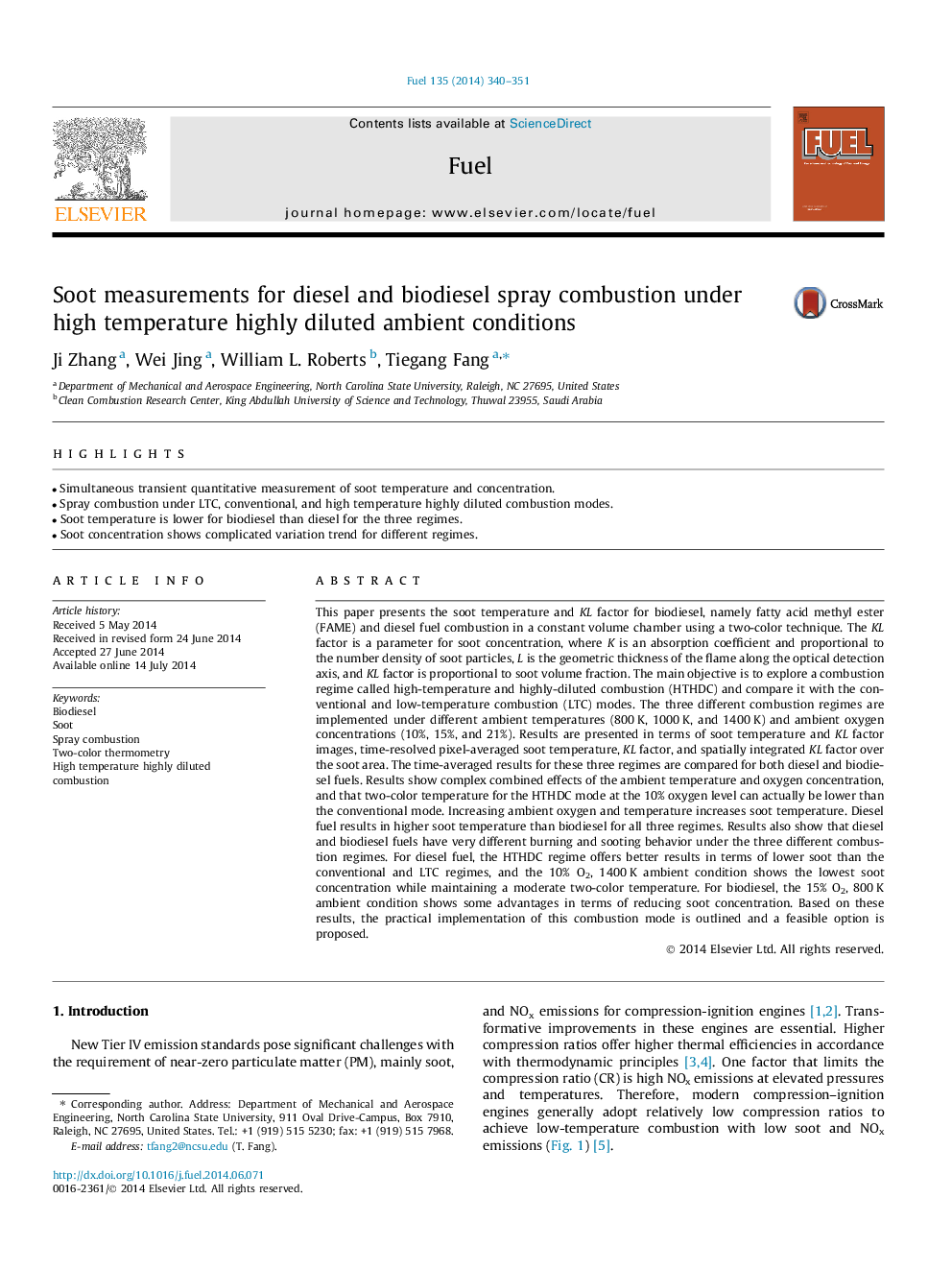| کد مقاله | کد نشریه | سال انتشار | مقاله انگلیسی | نسخه تمام متن |
|---|---|---|---|---|
| 6636939 | 461137 | 2014 | 12 صفحه PDF | دانلود رایگان |
عنوان انگلیسی مقاله ISI
Soot measurements for diesel and biodiesel spray combustion under high temperature highly diluted ambient conditions
ترجمه فارسی عنوان
اندازه گیری دوده برای احتراق اسپری سوخت دیزل و بیودیزل تحت شرایط محیطی بسیار رقیق شده با دمای بالا
دانلود مقاله + سفارش ترجمه
دانلود مقاله ISI انگلیسی
رایگان برای ایرانیان
کلمات کلیدی
بیودیزل، دود، اسپری اسپری، ترمومتری دو رنگ، درجه حرارت بالا رطوبت احتراق
موضوعات مرتبط
مهندسی و علوم پایه
مهندسی شیمی
مهندسی شیمی (عمومی)
چکیده انگلیسی
This paper presents the soot temperature and KL factor for biodiesel, namely fatty acid methyl ester (FAME) and diesel fuel combustion in a constant volume chamber using a two-color technique. The KL factor is a parameter for soot concentration, where K is an absorption coefficient and proportional to the number density of soot particles, L is the geometric thickness of the flame along the optical detection axis, and KL factor is proportional to soot volume fraction. The main objective is to explore a combustion regime called high-temperature and highly-diluted combustion (HTHDC) and compare it with the conventional and low-temperature combustion (LTC) modes. The three different combustion regimes are implemented under different ambient temperatures (800Â K, 1000Â K, and 1400Â K) and ambient oxygen concentrations (10%, 15%, and 21%). Results are presented in terms of soot temperature and KL factor images, time-resolved pixel-averaged soot temperature, KL factor, and spatially integrated KL factor over the soot area. The time-averaged results for these three regimes are compared for both diesel and biodiesel fuels. Results show complex combined effects of the ambient temperature and oxygen concentration, and that two-color temperature for the HTHDC mode at the 10% oxygen level can actually be lower than the conventional mode. Increasing ambient oxygen and temperature increases soot temperature. Diesel fuel results in higher soot temperature than biodiesel for all three regimes. Results also show that diesel and biodiesel fuels have very different burning and sooting behavior under the three different combustion regimes. For diesel fuel, the HTHDC regime offers better results in terms of lower soot than the conventional and LTC regimes, and the 10% O2, 1400Â K ambient condition shows the lowest soot concentration while maintaining a moderate two-color temperature. For biodiesel, the 15% O2, 800Â K ambient condition shows some advantages in terms of reducing soot concentration. Based on these results, the practical implementation of this combustion mode is outlined and a feasible option is proposed.
ناشر
Database: Elsevier - ScienceDirect (ساینس دایرکت)
Journal: Fuel - Volume 135, 1 November 2014, Pages 340-351
Journal: Fuel - Volume 135, 1 November 2014, Pages 340-351
نویسندگان
Ji Zhang, Wei Jing, William L. Roberts, Tiegang Fang,
